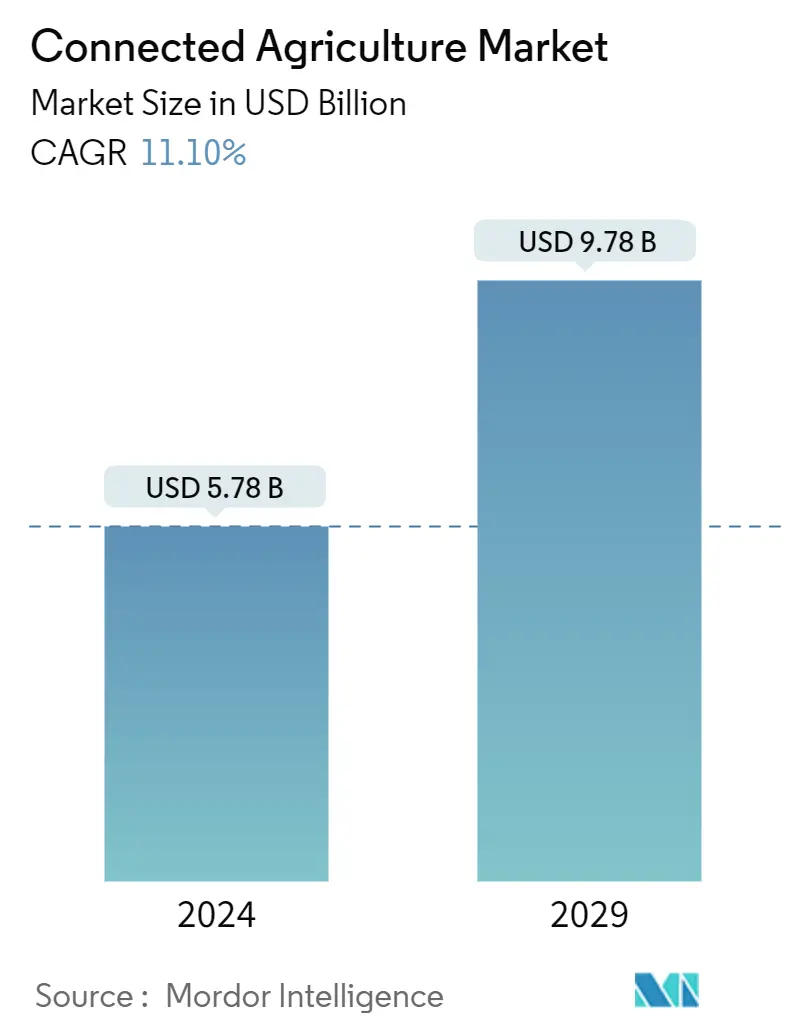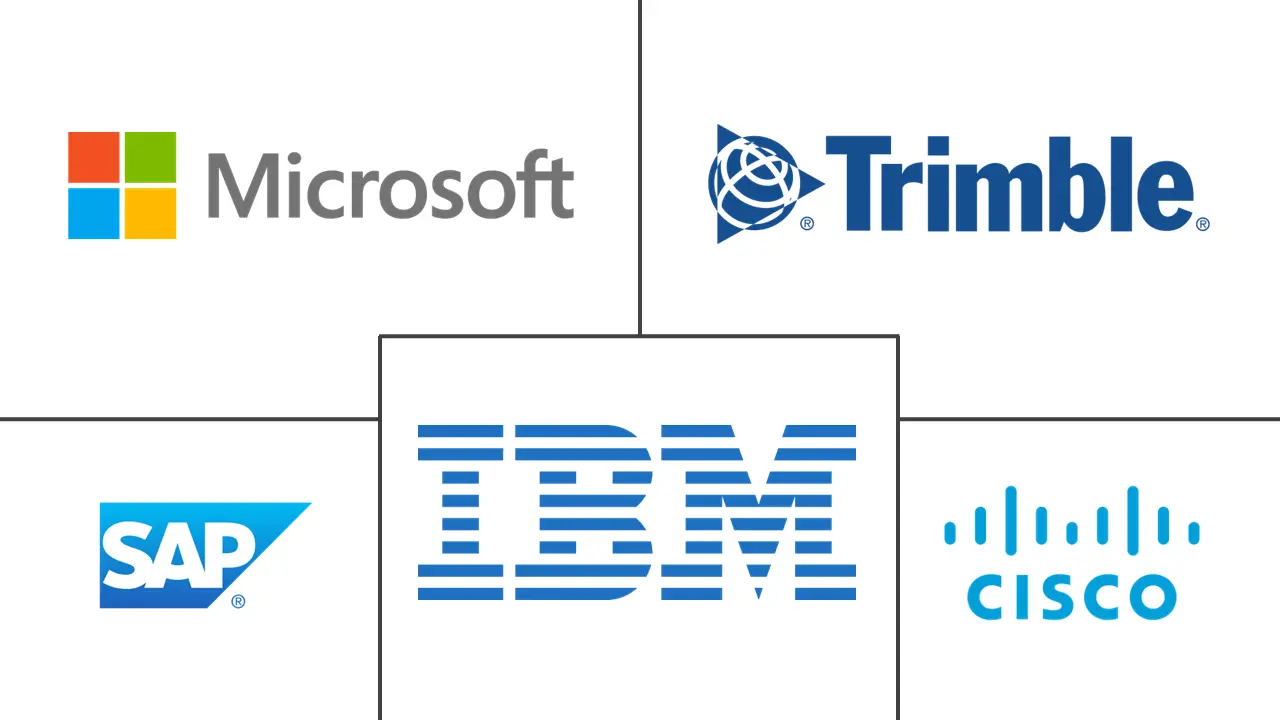Market Size of Connected Agriculture Industry

| Study Period | 2019-2029 |
| Market Size (2024) | USD 5.78 Billion |
| Market Size (2029) | USD 9.78 Billion |
| CAGR (2024 - 2029) | 11.10 % |
| Fastest Growing Market | Asia Pacific |
| Largest Market | North America |
Major Players
*Disclaimer: Major Players sorted in no particular order |
Need a report that reflects how COVID-19 has impacted this market and its growth?
Connected Agriculture Market Analysis
The Connected Agriculture Market size is estimated at USD 5.78 billion in 2024, and is expected to reach USD 9.78 billion by 2029, growing at a CAGR of 11.10% during the forecast period (2024-2029).
The demand for advanced agricultural techniques to optimize crop yields while using the least amount of resources, such as water, fertilizer, and seeds, is the key factor driving the growth of the connected agriculture market. Farmers and businesses will be able to manage their time more effectively on the farm while using fewer resources by putting various linked agricultural technologies into practice.
- Water management in agriculture is critical for increasing agricultural yields while decreasing costs and contributing to environmental stability. Agriculture officials are concerned about water scarcity and are working to enhance agricultural water management. Water management solutions in linked agriculture, which incorporate the Internet of Things (IoT), mobile applications, Big Data analytics, and decision support systems, are assisting in the production of environmentally friendly and optimum agricultural outputs for a growing population.
- Connected agriculture enables farmers to maximize crop cultivation while reducing expenses and effort associated with traditional agricultural methods. Connected agriculture boosts production by allowing farmers to expertly invest time and resources in the right combination to more precisely evaluate optimum sowing density, estimate fertilizers, and predict crop yields. Farmers currently rely on the most recent agricultural advancements, such as the usage of cell phones and other linked equipment. Sophisticated connected technologies such as low power wide area (LPWA), Zigbee, WiFi, and new wireless sensor technologies aid farmers in the planning and execution of various agricultural operations such as purchasing supplies, inventory control, timely planting and harvesting, and so on.
- Data collection is the first stage of precision agriculture and, thus, the most researched. This is accomplished mostly through the determination of soil fertility (one sample from the field, a polygon, or a zone). Zones are created using aerial or satellite imagery and are based on yield maps or photographs of the same crop over numerous years. It is done to boost yields eventually. A one-hectare polygon grid is the most often used soil testing method. This grid dimension is adequate for understanding the field's variability and what is going on in it. Finally, based on the soil scan, task maps are created for precise fertilizer and liming applications.
- There is a lack of understanding of connected farm technology, and installation is prohibitively expensive. These are the technology's constraints over the anticipated timeframe. The majority of farmers worldwide are small-scale farmers who cannot afford such costly equipment. This technique necessitates competent and knowledgeable farmers, large initial investments, and effective farming instruments, making farmers unwilling to gather information from it. Because of its high cost, it is only suitable for large and industrialized farms.
- The COVID-19 pandemic brought attention to using artificial intelligence (AI). Data is used in real-time by artificial intelligence and machine learning models to get insightful knowledge, such as when to plant seeds, which crops to choose, which hybrid seeds to select for higher yields, and other things. Precision agriculture, often known as artificial intelligence systems, is assisting in enhancing the overall quality and accuracy of harvests. AI technology aids in the detection of pests, plant diseases, and undernutrition in farms. Artificial intelligence (AI) sensors can identify and target weeds before deciding which herbicide to use.

